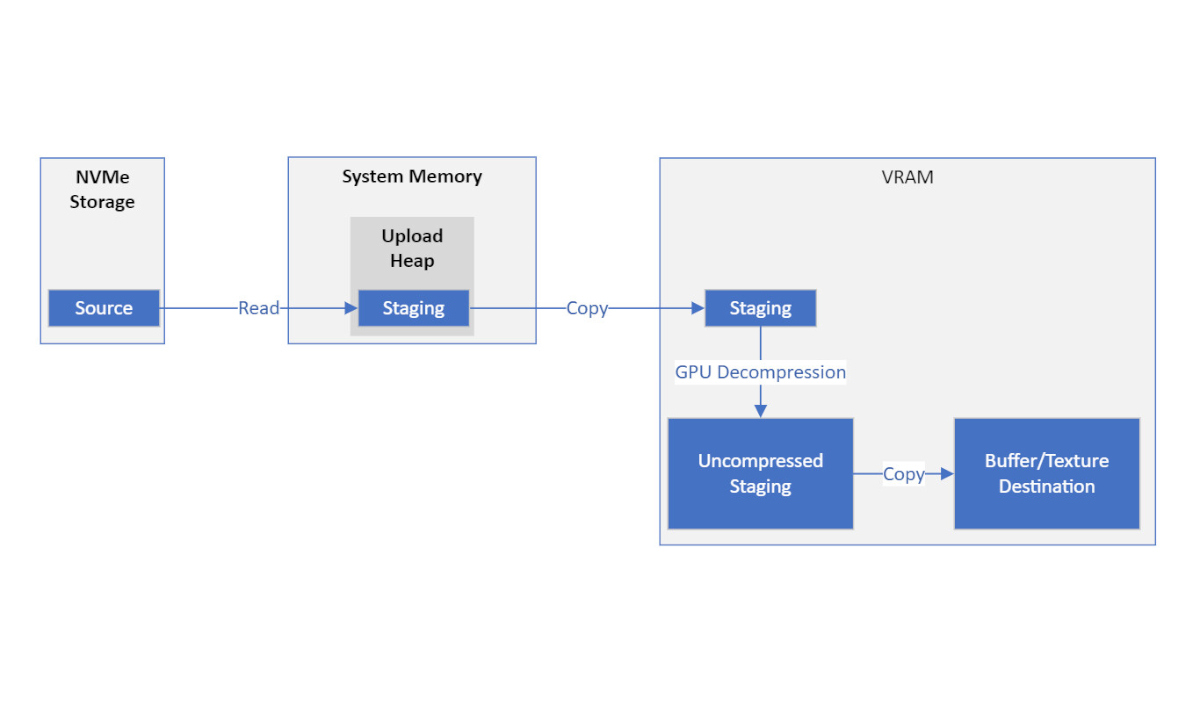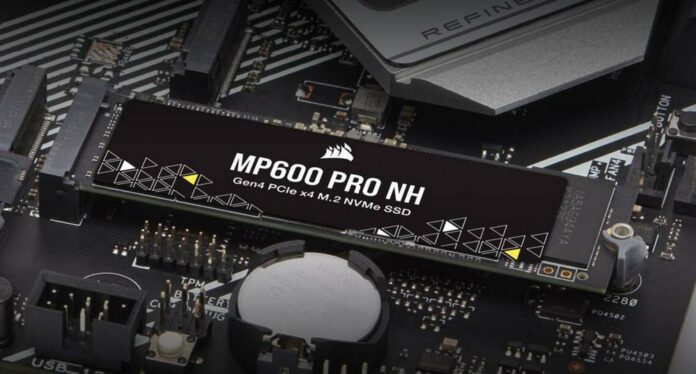Today, Microsoft announced its DirectStorage 1.1 API is officially available for game developers, bringing with it GPU decompression that allows GPUs to directly access storage devices on a system, and according to Microsoft, offering up to three times faster load speeds compared to DirectStorage 1.0.
One of the most enticing features of next-gen architecture is the addition of NVMe storage, and with it, the promise of blazing-fast load times. Bethesda’s 3D interactive load screens might have been entertaining the first few hundred times – the last few, not so much.
We have had a taste of Xbox’s ‘Velocity Architecture’ on PC in the form of DirectStorage 1.0, introduced to Windows in early March. It was designed to better leverage modern NVMe SSDs, bringing speed, bandwidth and latency optimisations to the Windows storage subsystem, ergo, improving storage performance and reducing load times.
In gaming, the process of compression and decompression is done by the CPU, with graphical workloads from system memory then being copied to GPU memory. This arduous process is the culprit that contributes to long load times and assets struggling to load in large open-world environments, often breaking immersion.

Direct Storage 1.1 takes it a step further by delivering GPU decompression, as having the GPU access system memory directly essentially cuts out the middleman. Also, in most cases, GPUs are extremely efficient at parallel processing and decompression tasks, i.e. enabling thousands of I/O requests on a GPU, as opposed to a CPU, makes for dramatically improved efficiency.
Microsoft explains, “Typically, decompression work is done on the CPU because compression formats have historically been optimised for CPUs only. We are offering an alternative method in DirectStorage 1.1 by moving the decompression of those assets to the GPU instead – known as ‘GPU decompression.’ Graphics cards are extremely efficient at performing repeatable tasks in parallel, and we can utilise that capability along with the bandwidth of a high-speed NVMe drive to do more work at once. As a result, the amount of time it takes for an asset to load decreases, reducing level load times and improving open world streaming.”
We would be remiss not to mention, however, that even though DirectStorage 1.1 has tremendous potential, developers still need to support it in their video games. For now, we can expect action-RPG Forspoken, releasing January 2023, to make full utilisation of the technology. Hopefully more games will follow suit in the near future.

